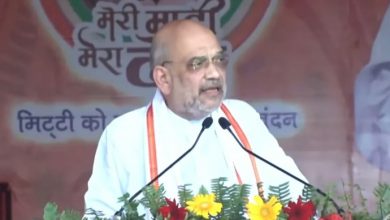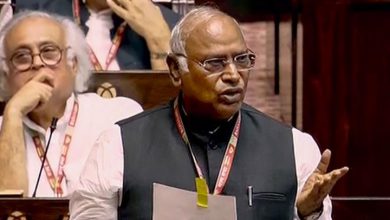RBI Keeps Key Lending Rate Unchanged, Meets Economists’ Expectations: 10 Points

The Reserve Bank of India (RBI) on Wednesday kept the repo rate steady, meeting economists’ projections. The repo rate, or the key interest rate at which the central bank lends short-term funds to commercial banks, stood at 6.5 per cent, said the RBI’s policy statement. Wednesday’s decision came days after official data showed that gross domestic product (GDP) growth had slowed down to 7.1 per cent in July-September from a more than two-year high of 8.2 per cent in the previous quarter. The RBI retained the GDP growth projection at 7.4 per cent for financial year 2018-19. The central bank has so far raised the repo rate twice this year.
Here are 10 things to know about RBI’s latest policy review:
The RBI also maintained its stance at “calibrated tightening”, ruling out the possibility of any reduction in the key lending rate for now.
“Given the assessment that growth will likely remain healthy for the rest of the year, the Monetary Policy Committee (MPC) retained its stance at calibrated tightening so as to buy time to pause, reflect and undertake future policy action with more robust inflation signals,” said Governor Urjit Patel said, in a press conference held after the release of the policy statement. (Also read: GDP growth rate lowest in 3 quarters)
While all six members of the MPC voted to keep the rates on hold, one member, Ravindra H Dholakia, voted to change the stance to “neutral”, according to the statement.
The stock markets weakened further after release of the RBI policy statement amid cautious trade. The Sensex ended 249 points – or 0.69 per cent – lower at 35,884 while the Nifty settled at 10,784, down 84 points from the previous close.
Economists said the RBI’s status quo on rates was along the expected lines. “We believe that the RBI is likely to change stance to ‘neutral’ in early 2019. We perceive that India is slowly entering into a low inflation, slowing growth quadrant… Our base case remains of a prolonged pause on repo rate,” said Aurodeep Nandi, India economist, Nomura Financial Advisory & Securities (India). (What economists say)
The RBI lowered its consumer inflation projection to 2.7-3.2 per cent for the second half of the current fiscal year, citing normal monsoon and moderate food prices.
Consumer inflation cooled off to a 13-month low of 3.31 per cent in October, comfortably within the RBI’s medium-term target of 4 per cent. The RBI primarily tracks consumer inflation data while formulating the monetary policy.
The RBI said it would begin to lower banks’ mandatory bond holding ratios by 25 basis points every quarter from Q4 until they reach 18 per cent of deposits. The move is likely to push banks to lend more rather than park their cash in safe-haven government securities. The statutory liquidity ratio (SLR) currently stands at 19.5 per cent. (Also read: RBI to inject Rs. 40,000-crore liquidity in December)
Wednesday marked the fifth bi-monthly policy statement for 2018-19, and the first since a debate with the government over the central bank’s autonomy. The government has called for a change in the central bank’s governance structure and setting up of panels to oversee its functioning.
After a marathon board meeting with the government, the RBI last month decided to examine the Economic Capital Framework – the amount of surplus reserve a bank holds to tide over risks.







